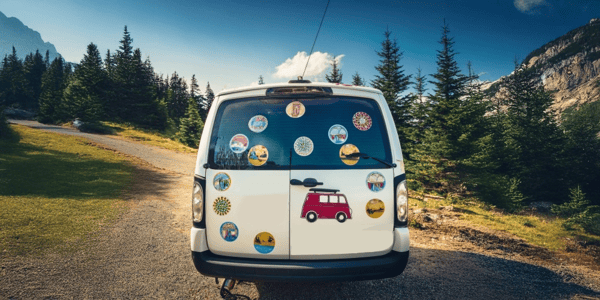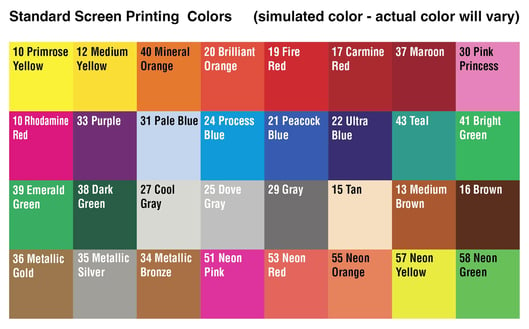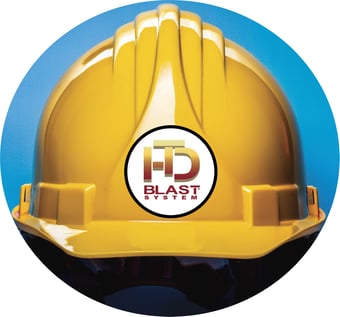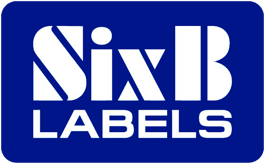Silkscreen labels and decals are a tried-and-true solution for brands that need maximum durability and high-impact visuals. Unlike many other label printing methods, silkscreen printing produces labels that can withstand years of use without losing their clarity or color intensity.

At SixB Labels, we’ve been perfecting silkscreen techniques since our founding in 1979. We know when this method is the right choice, how to maximize its benefits, and how to make your finished labels look exceptional, no matter the environment they’re used in.
The Basics of Silkscreen Printing
Silkscreen printing, also called screen printing, is a process where ink is applied through a fine mesh screen onto the label material. A stencil, or “mask,” blocks parts of the mesh so that only the chosen design areas receive ink. This method has been used for decades across industries because it offers unmatched color richness and durability.
 Where other printing methods may lay down a thin layer of ink, silkscreen applies a much thicker deposit. This thicker ink layer is one of the reasons silkscreen labels hold up so well in tough environments.
Where other printing methods may lay down a thin layer of ink, silkscreen applies a much thicker deposit. This thicker ink layer is one of the reasons silkscreen labels hold up so well in tough environments.
Why Choose Silkscreen Labels or Decals?
1. Exceptional Durability
Silkscreen inks are formulated to resist fading, scratching, and chemical damage. Whether your labels are exposed to outdoor elements, industrial cleaners, or heavy handling, they will retain their appearance far longer than most other printed labels.
Examples include:
- Outdoor equipment branding that resists sun and rain for years
- Marine or boating decals that handle constant water exposure
- Industrial safety labels that remain readable in hot, dusty, or oily environments
2. Vivid and Long-Lasting Colors
Silkscreen printing excels at delivering bold, opaque colors. Even when printed on dark or transparent materials, the ink remains bright and true to your brand’s specifications. This makes it ideal for logos, high-contrast designs, and applications where your label needs to be instantly visible.

3. Material Flexibility
Silkscreen labels and decals can be printed on a wide variety of materials, including:
- Vinyl – Flexible, weather-resistant, and ideal for outdoor applications
- Polyester (PET) – Strong and resistant to heat and chemicals
- Polycarbonate – Rigid, with excellent clarity for overlays and control panels
- Acrylic – Durable and can provide a glass-like finish
4. Custom Finishes for Brand Impact
Silkscreen printing allows for a range of special effects, such as:
- Raised ink for a tactile feel
- Metallic or pearlescent inks for premium appeal
- Matte or high-gloss finishes for the right look and function
- Spot colors for precise brand matching
These finishing touches ensure that your labels don’t just perform well—they look remarkable, too.
Common Applications for Silkscreen Labels and Decals 
Silkscreen printing is used in almost every industry that needs long-lasting, professional labeling, including:
- Industrial equipment labels that endure tough conditions
- Brand decals for vehicles, tools, or machinery
- Warning and safety labels that remain legible for years
- High-end product branding for luxury goods, electronics, and packaging.
- Control panel overlays with sharp, durable graphics
Silkscreen Labels vs. Other Printing Methods
While digital and flexographic printing are excellent for high-volume runs, fast turnarounds, or variable data printing, silkscreen stands apart for projects where longevity and durability are top priorities.
 Advantages over other methods include:
Advantages over other methods include:
- Thicker ink layers for greater resilience
- Better opacity on dark materials
- More vivid color for outdoor and industrial applications
For short runs or products with a short shelf life, digital printing may be more cost-effective. But for labels that need to last for years without compromise, silkscreen is often the smartest investment.
How SixB Labels Delivers Quality Silkscreen Products
At SixB Labels, quality control is built into every step of our silkscreen process. We combine decades of experience with modern technology to ensure:
- Accurate color matching to your brand standards
- Perfect registration so designs print cleanly and precisely
- Strong adhesion for the toughest environments
- Pre-production proofs so you can approve the design before printing
- Flexible order sizes to fit your exact needs
Since 1979, SixB Labels has been producing labels, barcodes, and specialty print products for businesses across industries. If you need silkscreen labels or decals that will perform beautifully year after year, we’re ready to help you design, produce, and deliver the perfect solution.
Contact SixB Labels today to learn more about our silkscreen printing capabilities and how they can strengthen your labeling program.

